As an Amazon Associate I earn from qualifying purchases.

Live long enough and you will eventually learn that even deeply held beliefs, tested by time and hard experience, can still be utterly wrong. You know what you know until life throws something at you that forces you to re-evaluate everything you thought was so certain just moments before. In this case, it is the ironclad maxim that you are what you eat.
Everything I’ve read or heard, and everything I have personally experienced as a duck hunter, has told me that ducks that are overly fond of eating seafood will taste of seafood — and that diver ducks are, for the most part, inferior at the table to dabblers because of this. Last week I was proven dead wrong.
Monday morning my friend RJ Waldron of Northwind Outfitters invited me out to hunt diver ducks out around Suisun marshes, at the mouth of the San Francisco Bay. We were hunting with a family from Fresno, and RJ had a tip that the spot we’d be hunting would be pretty good for bluebills. So we piled in his boat and headed out into the bay.
There is something deeply interesting about motoring out in darkness, with only the lights of factories and oil refineries to light your way.

The inner Bay Area communities of Richmond, Benicia, Pittsburg and such are working-class, hard-nosed communities. This is the rough hewn, industrial heart of Northern California. Seeing it from the water only makes that more obvious. The spit of land where we set up was no pristine wilderness. Empty soda bottles, a child’s football, cigarette butts, the head of a doll — jetsam from all over the Bay had washed up on our stretch of marsh.
We set up a makeshift blind right on the shoreline while RJ and our friend Jim the Baitguy tossed out decoys from the boat. Diver ducks are, in general, not as wary as dabblers, so staying completely hidden was not nearly as important as staying still. Soon we sat hunkered down behind the blind, awaiting the dawn.
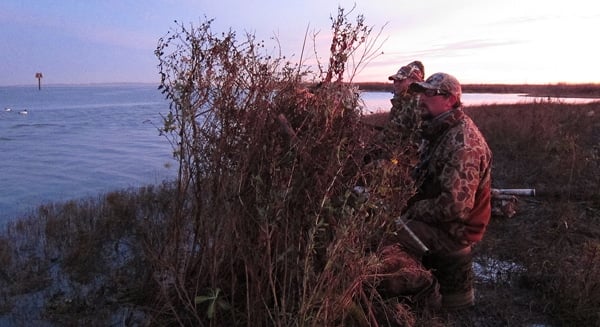
A few minutes before dawn, one of the kids from Fresno spotted something. “Hey, what’s that in the decoys? Is that a duck?” It was. A bluebill, also known as a scaup or bluey, was paddling around in our spread. A good sign. A few minutes later, a flock of bluebills flew by a few hundred yards offshore. RJ and I called after them — bluebills make a raspy growl you can imitate with a regular mallard call. The birds liked what they heard, and turned toward us.
“Get ready,” RJ hissed. We waited for RJ to call the shot as the bluebills flew closer, closer… feet down, ready to land! “Kill ’em!” And we all let fly. Four birds hit the water.
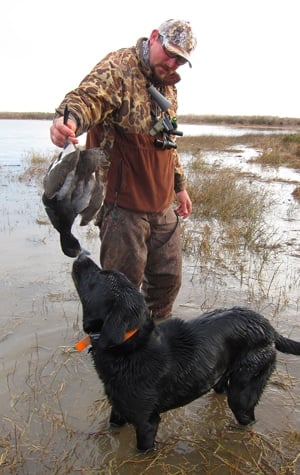
Ninja the Dog hadn’t even brought in all four before more bluebills came in. A few more went down. “Well, at least we won’t get skunked,” I said.
RJ noticed that these birds were mostly greater scaup, which are much larger than the more common lessers. A big drake can weigh a full 3 pounds, which is huge for a wild duck. I’d never knowingly shot a greater scaup before, but the literature on their food habits that I’d read in the past (yes, I am a duck geek) was not promising: In the San Francisco Bay area, close to 90 percent of a greater’s diet was clams, specifically the invasive Asian clam.
“Oh well,” I said. At least bluebills skin easily.
“You know, a couple weeks ago a client seared some with just salt and pepper and they were great,” RJ said.
“Yeah, but they were skinned, right?” No, RJ said. They were skin-on. Now if you don’t already know this, it is the skin — or rather the fat under the skin — that gives a duck its distinctive flavor. By rights a clam-eating bluebill should have gnarly, fishy fat. I was incredulous. “How could that be?”
“I don’t know, man. But they were good.”
RJ said those birds all had a layer of white fat. I didn’t have time to contemplate this because we kept getting strafed by bluebill after bluebill. So many that Ninja was getting tired.
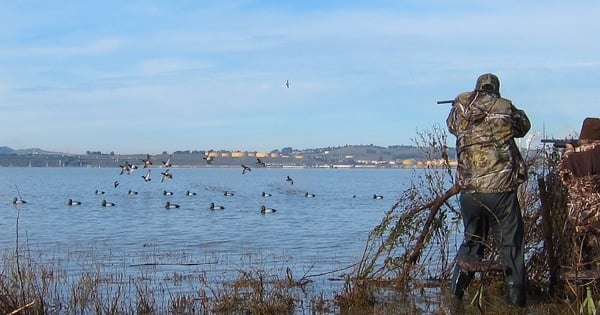
One more group came in, we rose, fired and four more ducks fell dead. Just like that, it was over. We’d shot five limits of bluebills. I looked at my watch: 9:49 a.m. Amazing.
In the aftermath, as RJ and Jim picked up decoys and we cleaned up our spot, I chatted with one of the Fresno guys about eating these ducks. I told him that he’d probably be better off skinning them and popping off the breast and legs. “But, if you see one with nice white fat, you might want to pluck it.” I picked up a bluebill and stripped some feathers from its breast. A thick pad of white fat lay underneath ivory skin. I just shook my head in bafflement. “Yeah, uh, like this one.”
Back at home, I sat down to skin my birds. But what RJ had said about the skin-on blueys he’d eaten, with just salt and pepper, still weighed on me. Greater scaup are clam-eaters. Period. Still…
Just for the hell of it, I plucked enough breast feathers of all my birds to check them for the orange fat I knew would be an indicator of a fishy duck. After all, every scaup I’d ever shot in California had fat like this. Until now. Every one of these birds — all greaters — was not only fatty, but their fat was almost as white as a rice-eating pintail’s.
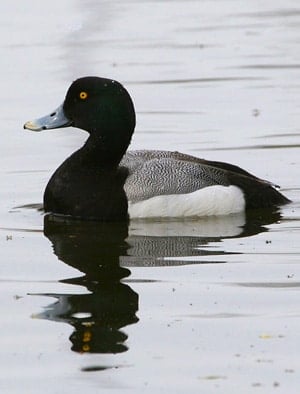
No matter what a duck had been eating, I’ve never, ever encountered one that had white fat that was not mild and neutral-tasting. So I plucked them, on faith that my past experience would hold true. These birds were beautiful! Plump, big and not smelly or fishy at all. Still I had my doubts. The real test would be in the eating.
First I chopped up the excess fat on the bluebills and rendered it. A few were whiter than the others, so I did them first. I let them boil a few minutes, then stuck my nose over the pot and inhaled… ducky, slightly saline. Not fishy. I was amazed.
Then I seared some breasts, skin on, and ate them with only salt and pepper. They were, if anything, meatier and beefier tasting than the dabblers I was used to. There was a strong umami hit and that zephyr of salinity, but nothing offensive or stinky.
After consulting with several duck biologists as well as those who are more experienced hunting greater scaup than I am, it seems that this is not uncommon. “Clams are a lot milder than fish, after all,” one said. Several other saltwater scaup hunters echoed my experience: “If the fat’s white, it will be a good bird.”
Never in a million years would I have imagined that a clam-eating, saltwater-living quasi-sea duck would a) be fatty and b) have mild-tasting fat to boot. But it’s true. And I am wiser for it.
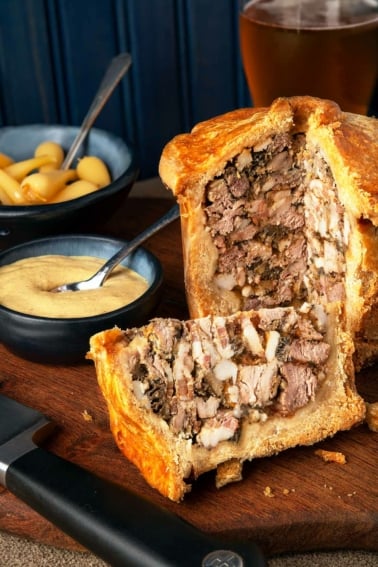
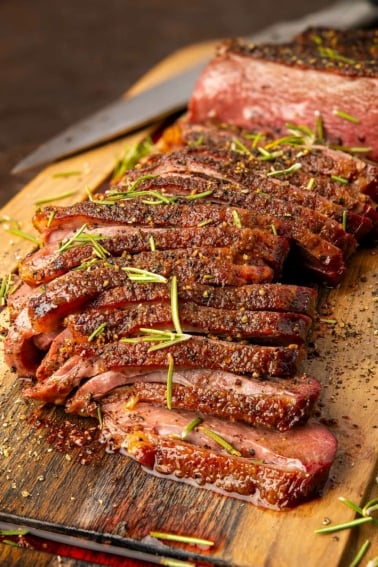
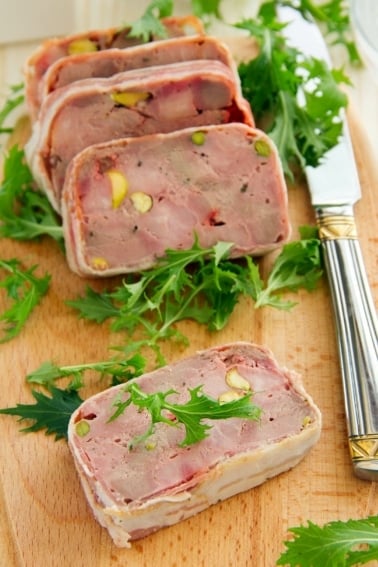
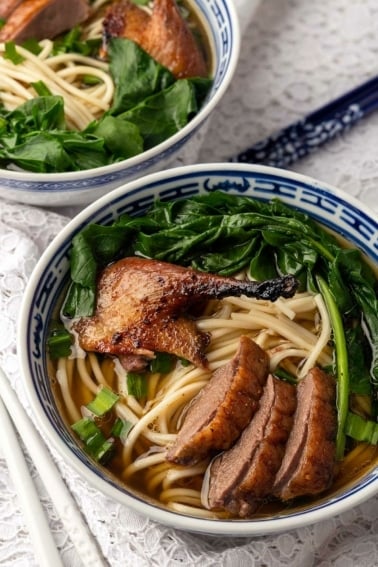
This past weekend I was hunting in the south bay of SF. The only birds we saw were all divers. Do you have any simple recipes for Bufflehead and Scaup? I shot them so I want to enjoy them.
Thanks
Troy: Start here: https://honest-food.net/eating-sea-ducks/
I just discovered and bought your superb duck cookbook – what a delight.
I have also started hunting the South Bay from a kayak and this article motivates me try scaup. I am no kinda gourmet (I think Valley spoonies are just fine), but I will report back on the results this weekend.
I skin and breast all spoonies and ruddy ducks. They are fantastic as fajitas or soaked with OJ and teriyaki and then BBQ’d.
I just shot my first Northern Shoveler drake. It looked beautiful and after plucking and gutting it looks also great and has a clean smell. I plan on testing how good it tastes roasted whole after reading this post. Thanks again Hank.
Great to hear that you tried some divers skin-on and enjoyed them! I’ve had both lesser and greater scaup that were quite tasty whole and also the odd delicious goldeneye and bufflehead. Ruddy ducks, as you know, are often excellent for divers, too.
On the dabbler side, Norther Shovelers are often maligned, but they are genetically almost identical to blue-winged and cinnamon teal, both of which have much better reputations at the table. The Australasian Shoveler, another related blue-winged species looks like a composite of its three North American cousins. I wonder if the folks Down Under consider them good table fare?
As for toxicity, California’s OEHHA does not only warn about selenium levels in scaup that dive for clams in the Bay Area, but also for all ducks in the Grasslands of Western Merced County (Los Banos region of the Central Valley), including all the dabblers. Unfortunately, wildlife is exposed to a wide range of environmental toxins in our polluted world. I still eat (and feed my children) wild duck, but avoiding livers and keeping portions small is (sadly) a wise precaution in much of North America today.
I will have to say that I was a little skeptical about trying this but I just finished pan searing one of the fatter breasts from todays bag and it was delicious. Thanks for the tip Hank, if not for the timliness of this article all seven would have gone into a gumbo!
Hank-
Just for “scientific and research purposes” which you obviously enjoy partaking in- next time you harvest blueys- or another species eating coastal marine invertebrates- take the gut contents (sample your entire bag) and have it tested for contaminants-
Maybe have some pals do the same as they hunt them somewhere else (from another sw marsh area) and see what the difference is….
We never know where our birds have been- but you can bet Mallards are eating pesticide sprayed wheat and corn, dabbling in ag area rivers and eating things we would consider toxic- let alone Geese and their habits of grazing at golf courses ….
Karen
We’re heading out with RJ this weekend so hopefully we get to bring back some of those good eatin’ greaters!
Laura: The VAST majority of wild game is not contaminated by anything. The exceptions are oceanic species, mostly fish and in this case, ducks. The reason is mercury and other heavy metals. The same reason striped bass get high levels of mercury is the reason that some of these ducks get high levels of selenium.
Bottom line: Wild meat IS safer than factory farmed meat. Period.
Well dang! We eat wild elk, salmon, pheasant, quail and duck for almost all our meals, thinking it’s safer, not more contaminated than domestic beasts/birds. Am I wrong? Always thought that meat that is “free range”, “antibiotic free”, no feed lot, no fish farm, no overcrowded chicken coops etc was far better than the commercial alternative. Am I wrong? Then again, we don;t hunt in SF bay area, but up in Idaho and E. Washington.
Guidelines?
Florian: What Guy said. Bottom line is acceptable risk. I am not having kids anytime soon and there are no kids or pregnant women in my household, so I don’t particularly care if I eat these ducks a little more often than the government recommendation. But yeah, if I had kids in the house, I’d follow the recommendation.
Marty: Yes, shovellers are safe to eat. They are not the best-tasting ducks, however. I’d skin any spoonies shot from your area.
Celeste: The bluebills I’ve been shooting are a thousand times better tasting than coots. Coots really ought to be skinned – and you are right, gumbo is a good choice.
How do bluebills taste as compared to coot? Coot are pretty fishy, but making gumbo out of them tames the funky flavor into something pleasant.
I live in the Fresno area and I have a lot of ducks in the freezer. Mainly Northern Shovelers. Can somebody guide me to resources to see if these are safe to eat? It doesn’t sound like Hank has any concerns.
Florian,
All wild animals will contain contaminants to some degree. Depending on diet and where the animal lies in the food chain hierarchy, will result in higher or lower concentrations of these contaminants. The state departments place consumer warnings and recommendations on consumption of wild game based on studies and field samples. The California Environmental Protection Agency’s Office of
Environmental Health Hazard Assessment (OEHHA)does put out a consumption warning in the California DFG website and in the Waterfowl Regulations Handbook. This warning and consumption recommendation is based on risk estimates that assume long-term consumption. So if you are trying waterfowl for the first time or eat duck skin/fat/or livers only on a few occasions a year, you have little to worry about. The DFG & OEHHA also highlight certain areas & types of waterfowl in California where higher levels of contaminant (mostly selenium) and risk of health hazard exist in consuming waterfowl from these areas. Ironically the area Hank hunted in this article/blog is highlighted as one of the potential risk areas in the DFG handbook (San Francisco Bay (Alameda, Contra Costa, Marin,
San Francisco, San Mateo, Santa Clara Counties)and with Hank’s description of the industrial area they were hunting in it is no surprise. The OEHHA recommends that no-one eats more than 4oz of meat per 2 weeks from this area and highlights the Greater Scaup that Hank and his friend from Fresno were hunting. The best policy is to consume all wild game in small quantities and to avoid feeding to expecting or nursing mothers and children as they are more adversely affected by the contaminants. I personally still consume wild-game, but treat it as a special occasion meal, not to be eaten on a daily basis, but as a prized meal to enjoy once a week or once a month with good company. In California the odds of dying in a car accident are astronomically higher than dying from lead or selenium overdose from consuming waterfowl, this doesn’t stop me from commuting every morning and it sure as hell won’t stop me from enjoying a fine Duck dinner a few times a month.
I find it interesting that you talk about cooking wild ducks with their skin on. The New York State Department of Health says that the fat and skin should be discarded due to chemical contamination. Are there no similar recommendations in California?
Thanks for sharing! Sounds like a wonderful surprise!